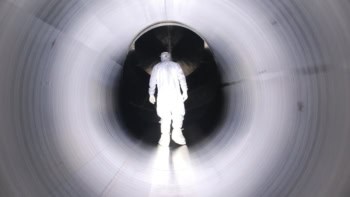Nuclear physicists have created an isotope of silicon that contains twice as many neutrons as protons. Measurements made with silicon-42 - which contains 14 protons and 28 neutrons - will shed new light on the concept of "magic numbers" in nuclei (Nature 435 922).
Most nuclei contain similar numbers of neutrons and protons, or more neutrons than protons. However, if an isotope of a given element contains too few or too many neutrons it will not be stable. The nuclear shell model, which was first proposed in 1949, explains that nuclei with certain magic numbers of neutrons and/or protons are especially stable because the neutrons and/or protons form closed shells. Nuclei that contain magic numbers of both protons and neutrons are even more stable and are said to be “doubly magic”. The magic numbers are 2, 8, 20, 28, 50 and 82.
However, it had been thought that highly unstable nuclei would have magic numbers that were different from those found in their more stable counterparts. To investigate this, Paul Cottle and colleagues at Florida State University, Michigan State University, the Lawrence Berkeley National Laboratory and Surrey University in the UK decided to study the silicon-42 nucleus, which has 12 neutrons more than silicon-30, the heaviest stable isotope of the element, and six protons fewer than calcium-48, the lightest stable nucleus to contain 28 neutrons.
“The surprise for us was that the magic number for protons in silicon-42, and also the full shell structure, are the same as in calcium-48,” Cottle told PhysicsWeb. “Silicon-42 is very close to the limit of nuclear existence – the heaviest silicon isotope ever observed is silicon-43 – and we anticipated significant changes in proton shell structure from calcium-48.”
Cottle and colleagues produced the silicon-42 nuclei by crashing sulphur-44 nuclei into a beryllium target at the National Superconducting Cyclotron Lab (NSCL) at Michigan State University. The experiment was made possible by the Coupled Cyclotrons Facility at Michigan, which produces the most intense beams of short-lived nuclei, like sulphur-44, that are available anywhere. The experiments also relied on the use of fast-beam “knockout” reactions, pioneered by Gregers Hansen of the NSCL and Jeffrey Tostevin of Surrey, to eject two protons from the sulphur-44 nuclei to produce silicon-42.
The results show that the silicon-42 nucleus remains stable despite containing a large excess of neutrons. The data also suggest that the proton number 14 is semi-magic because it corresponds to a closed subshell, which means that the nucleus is also spherical.



